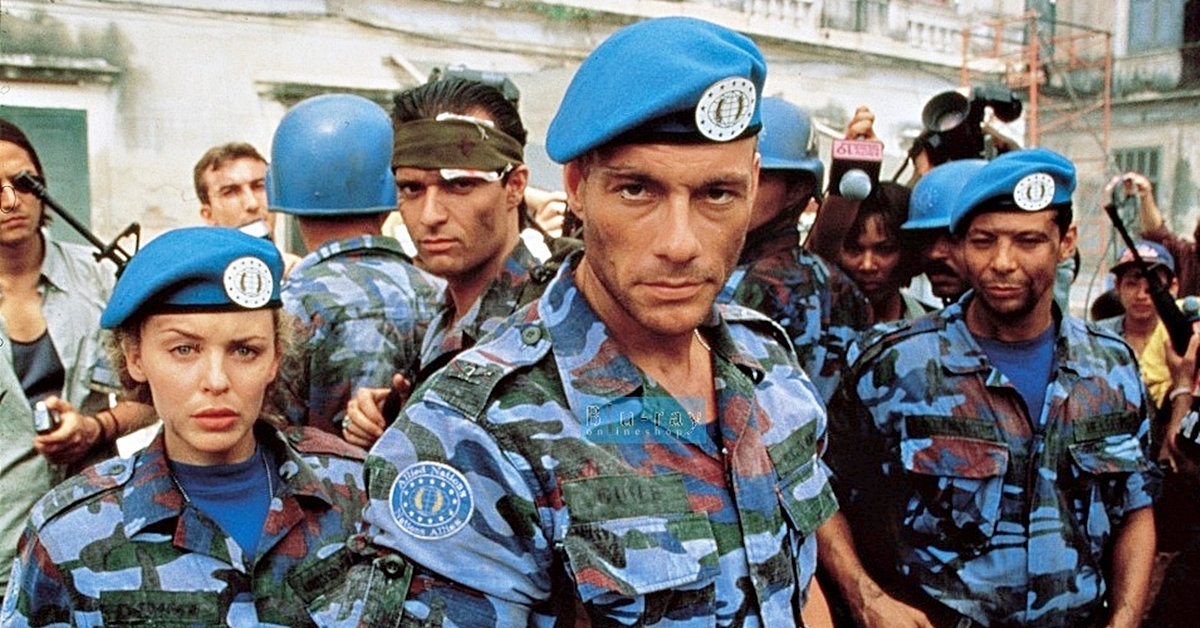Whilst we usually focus our attention on popular and critically acclaimed movies, there are some that demand our attention despite being absolutely terrible. Like the saying goes, sometimes they’re so bad they’re good!
Once such example is the Jean-Claude Van Damme Street Fighter movie from 1994, which as you’ll see if you read on, was as interesting behind the scenes as it was absolutely awful on our cinema screens.
Below are 20 things that you might not have realised about Street Fighter: The Movie…
20. The first draft of the script was written in one night
In the early 90s, Steven E. de Souza was one of the most successful screenwriters in Hollywood.
The writer’s name was synonymous with action thanks to such smash hits as 48 Hrs., Commando, Die Hard and Die Hard 2.
[rtk_adunit_top]
De Souza had to draw on his well-honed storytelling skills when writing Street Fighter – as he cranked out the first draft of the script in a single night.
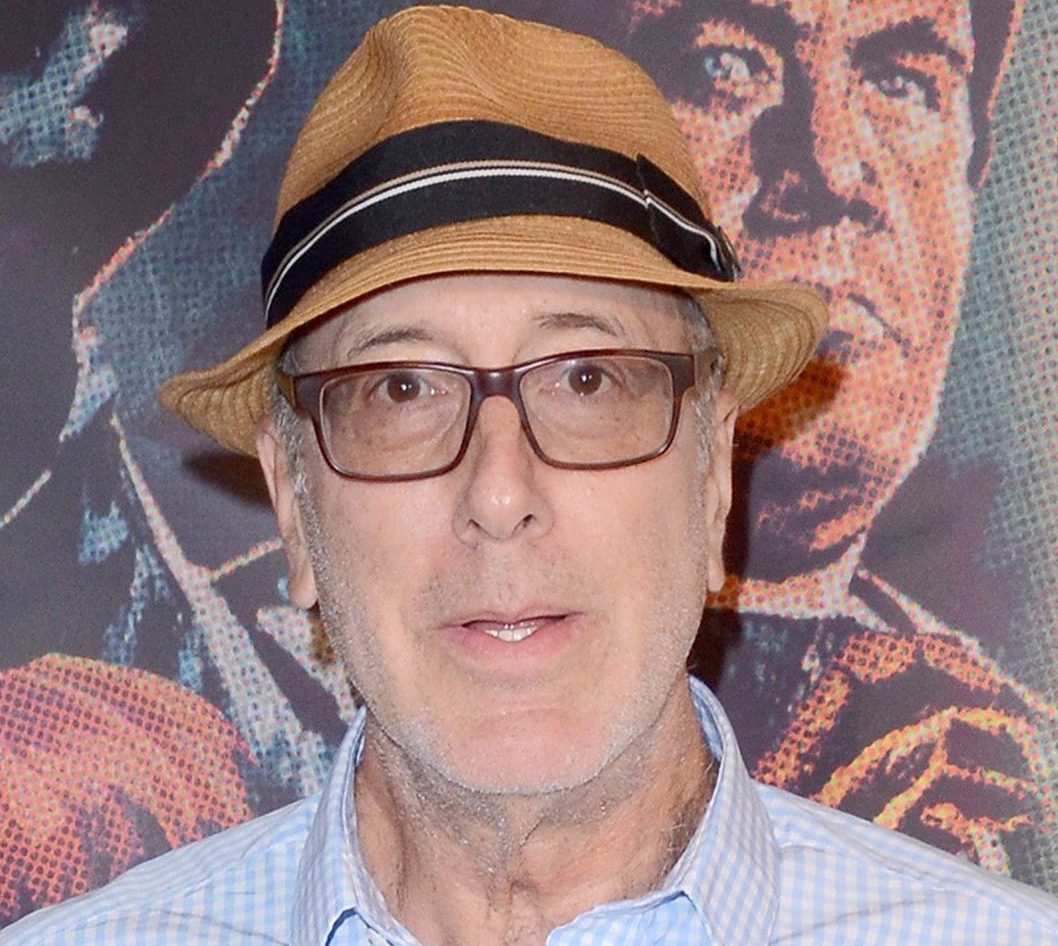
- CredIt: Shutterstock
The screenwriter went to such lengths as he discovered he had a very limited window when executives from Capcom – the video game company who owned the property – were in Hollywood.
[rtk_adunit_middle]
De Souza then produced a script at extreme speed to ensure the Capcom representatives had a script in their hands before they returned to Japan (although this would of course be rewritten later).
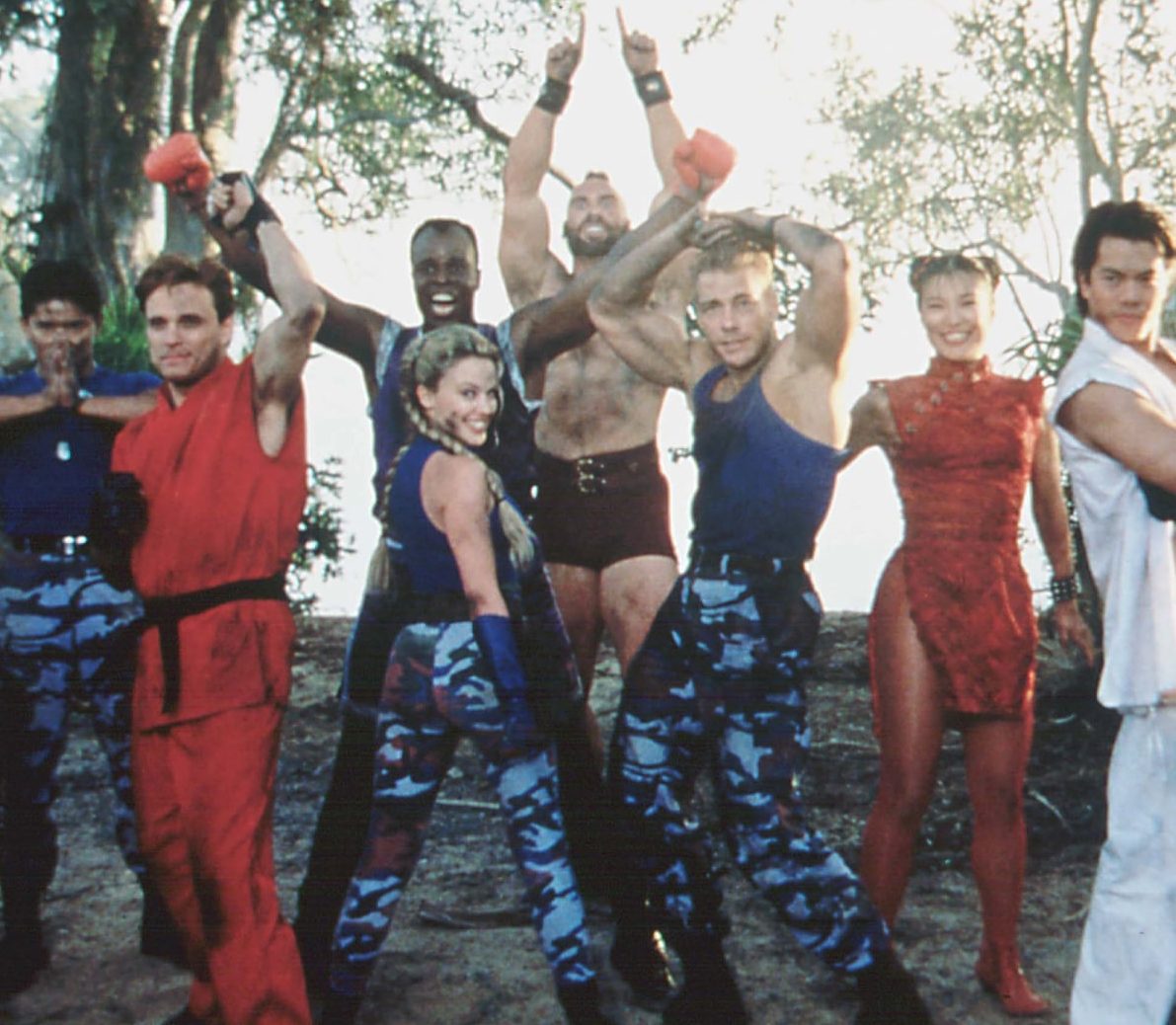
Clearly this did the trick, as not only did de Souza get the writing job on Street Fighter, he was also hired as the film’s director.
[rtk_adunit_bottom]
This was in spite of the fact that, while he was a seasoned screenwriter, de Souza hadn’t directed a movie before.
19. The film wasn’t Steven de Souza’s first collaboration with Capcom

De Souza may have found it that bit easier getting his foot in the door on Street Fighter, as he was no stranger to Capcom.
[rtk_adunit_top]
The writer had previously collaborated with the games company on their popular arcade coin-op Cadillacs and Dinosaurs.
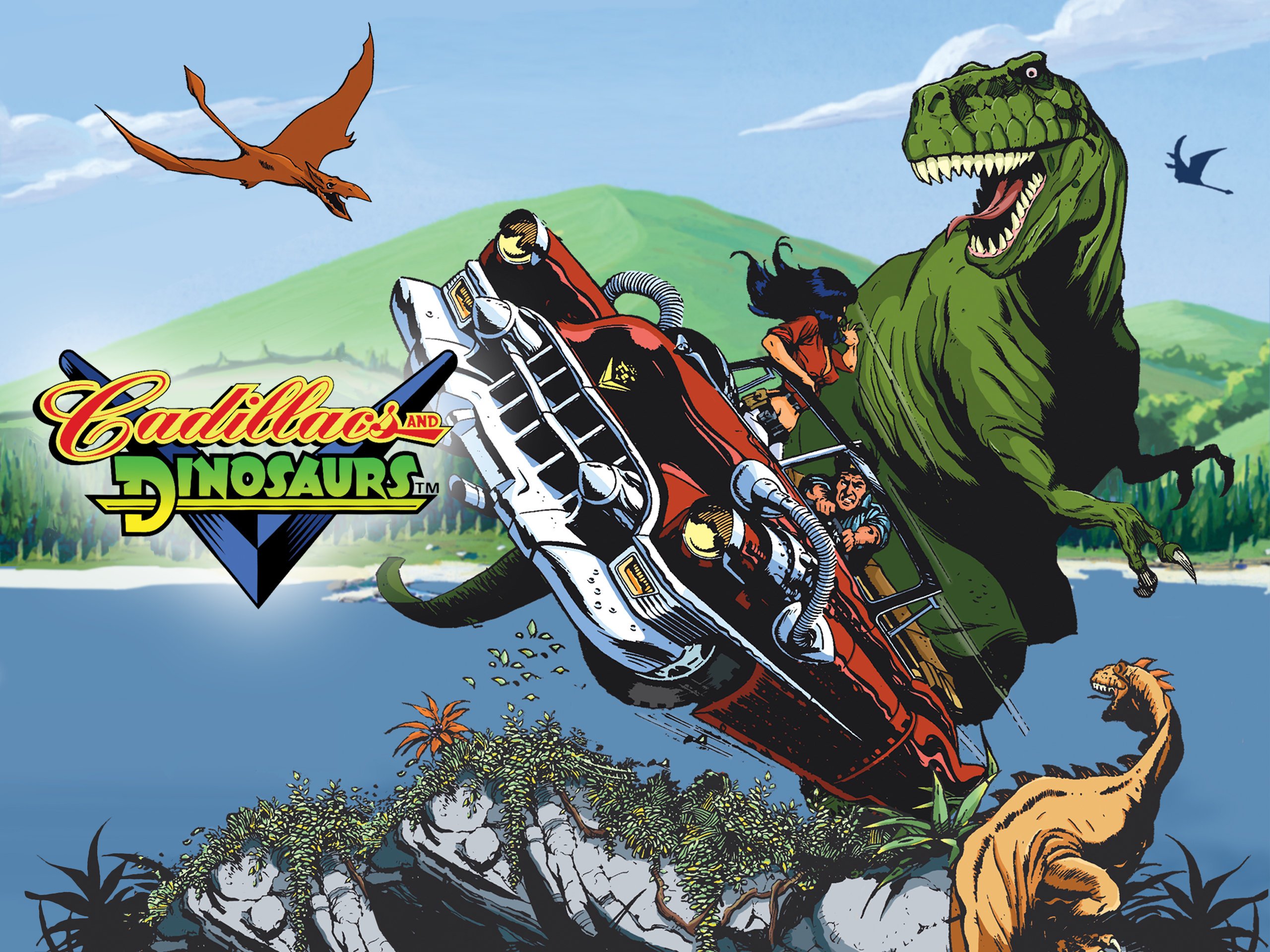
The sci-fi action game was released in conjunction with a cartoon series produced by de Souza in 1993.
[rtk_adunit_middle]
De Souza actually brought the project to Capcom first before making the animated series, which ultimately only ran for 13 episodes.
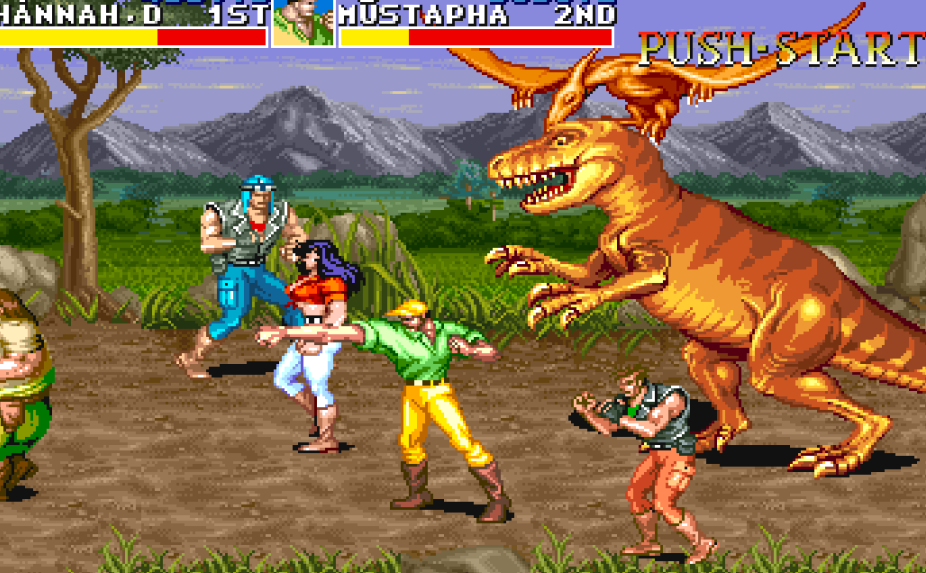
The game, however, proved massively popular, remaining an arcade favourite years after its release.
[rtk_adunit_bottom]
Both the video game and the cartoon series were adapted from pre-existing comic book series Xenozoic Tales.
18. Capcom financed the film themselves, and had the final say on everything

The year before the Street Fighter movie landed, the world had its first big screen video game adaptation in the somewhat unfortunate form of Super Mario Bros.
[rtk_adunit_top]
Super Mario Bros had been independently produced; Nintendo had been content to sell the rights to the property and take no further involvement, letting the filmmakers do whatever they wanted.

Perhaps endeavouring to learn from Nintendo’s mistake, Capcom maintained total control of the Street Fighter movie.
[rtk_adunit_middle]
While Sony distributed the film, Capcom themselves put up the bulk of the $35 million budget.
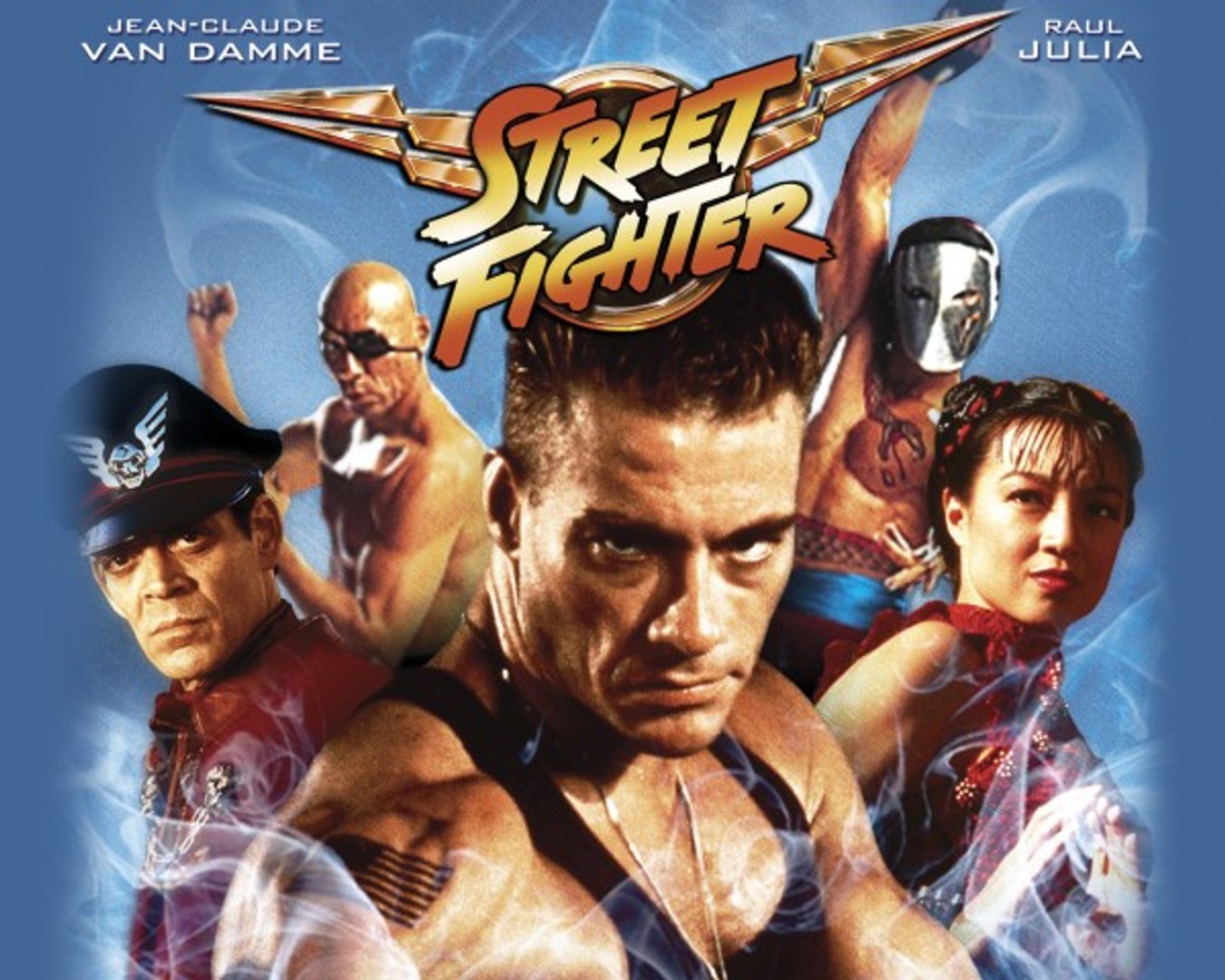
Subsequently, the video game company had final say on all major aspects of the film – which included its planned release date of Christmas 1994.
[rtk_adunit_bottom]
As work on the film only began in early 1994, the pressure was on right away.
17. The movie loosely follows the plot of the Street Fighter II arcade game
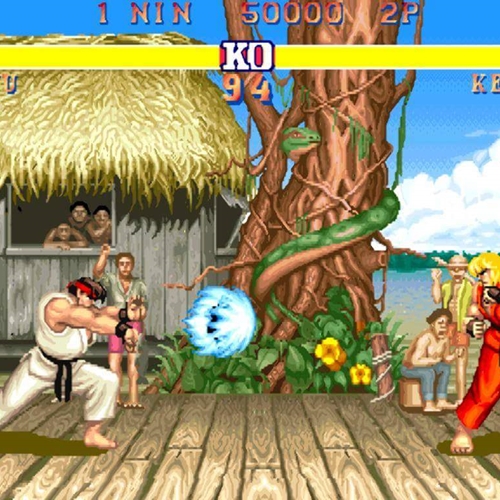
We’ll be honest in saying that we struggle to remember any of the Street Fighter video games having anything resembling a story, beyond “this guy and that guy punch and kick each other.”
[rtk_adunit_top]
However, the Street Fighter movie did (loosely) follow the plot of the 1991 arcade game Street Fighter II: The World Warrior – the game which really embedded Street Fighter in the popular consciousness.
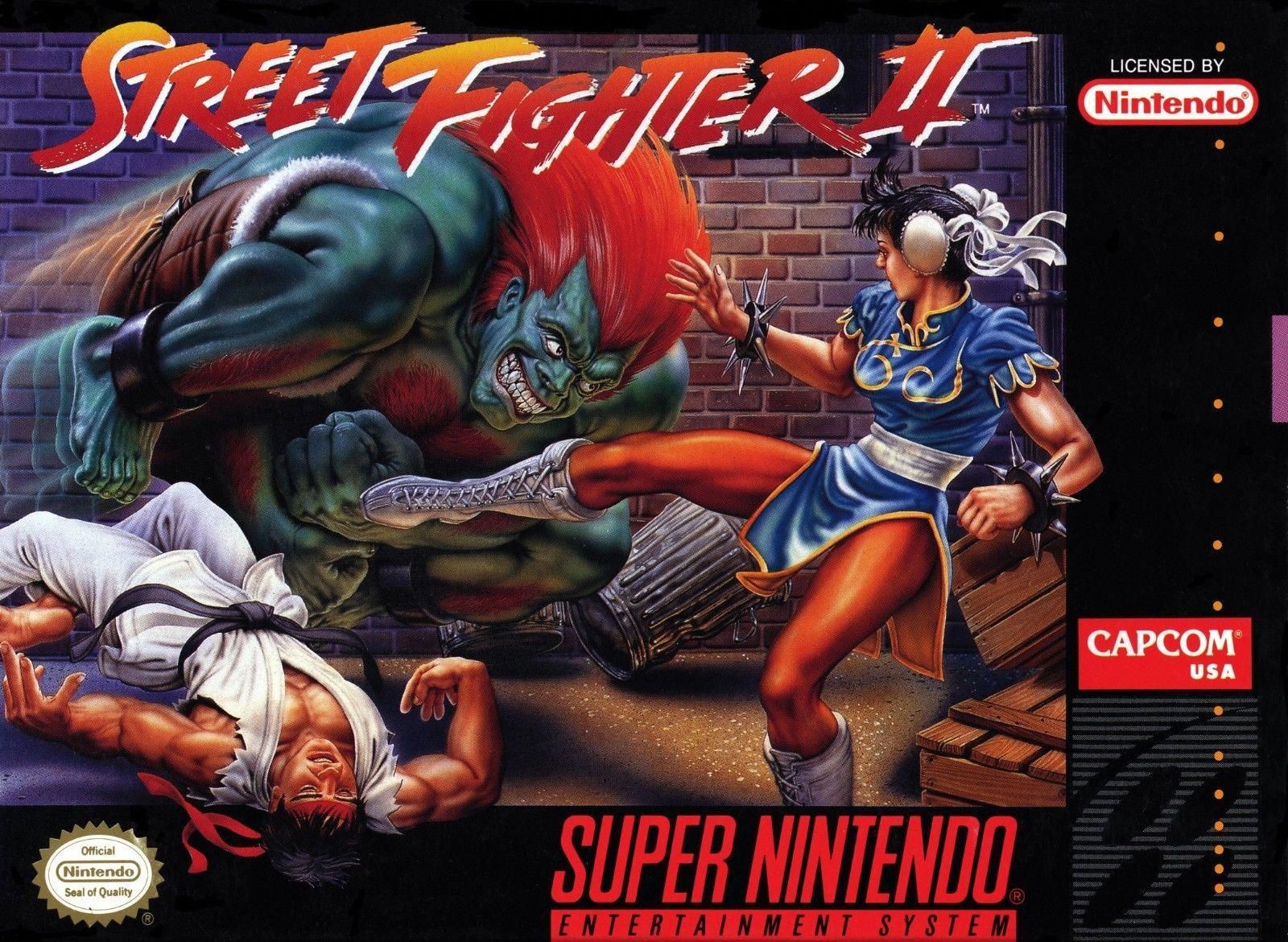
The action centres on Shadaloo, the fictitious Southeast Asian country ruled over with an iron fist by M. Bison (Raul Julia).
[rtk_adunit_middle]
The despotic megalomaniac Bison takes a group of relief workers hostage, and demands an exorbitant ransom.

While world leaders fret, a military unit led by Colonel Guile (Jean-Claude Van Damme) head in to take the tyrant down.
[rtk_adunit_bottom]
Various other martial arts masters join the fight, including Ryu (Byron Mann), Ken (Damian Chapa) and Chun-Li (Ming-Na Wen).
16. Steven de Souza and Capcom wanted the film to be a Bond-style adventure
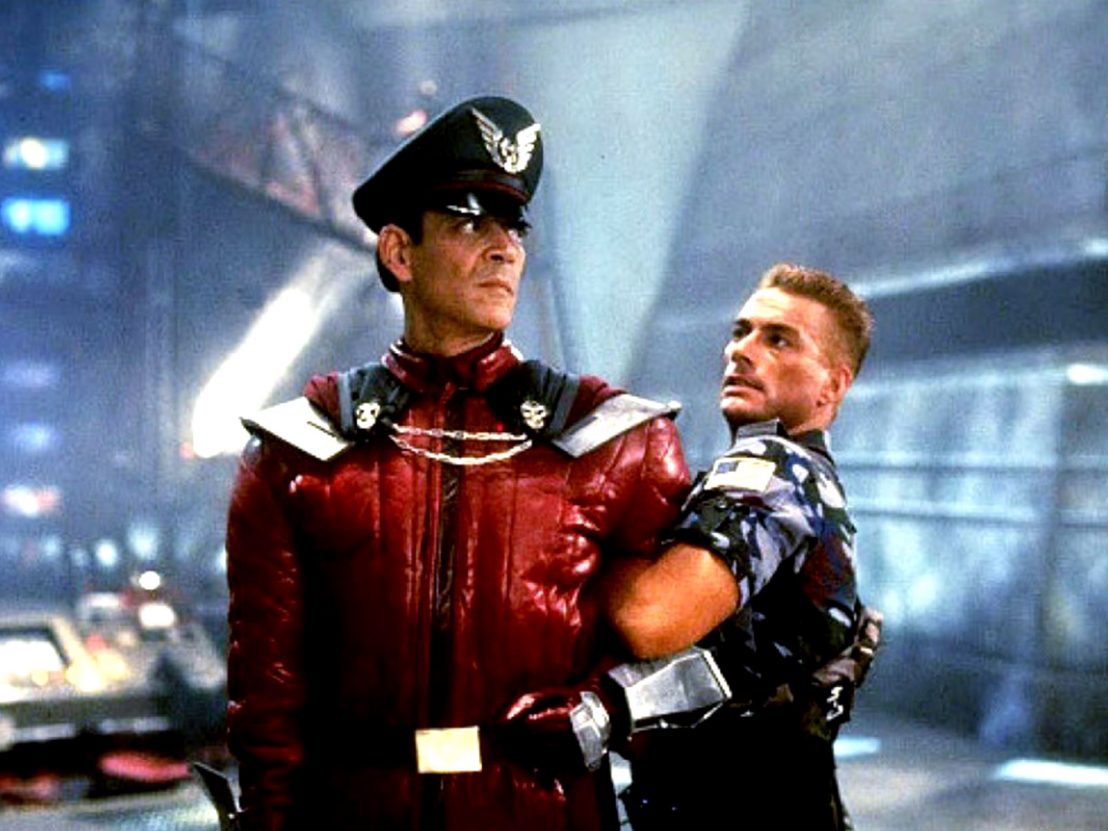
Considering that it’s called Street Fighter, it’s surprising that the characters in the movie don’t actually spend much time fighting in the street.
[rtk_adunit_top]
Given the format of the Street Fighter games, it might have made sense for the movie to centre on a martial arts tournament, in the vein of such action classics as Enter the Dragon.
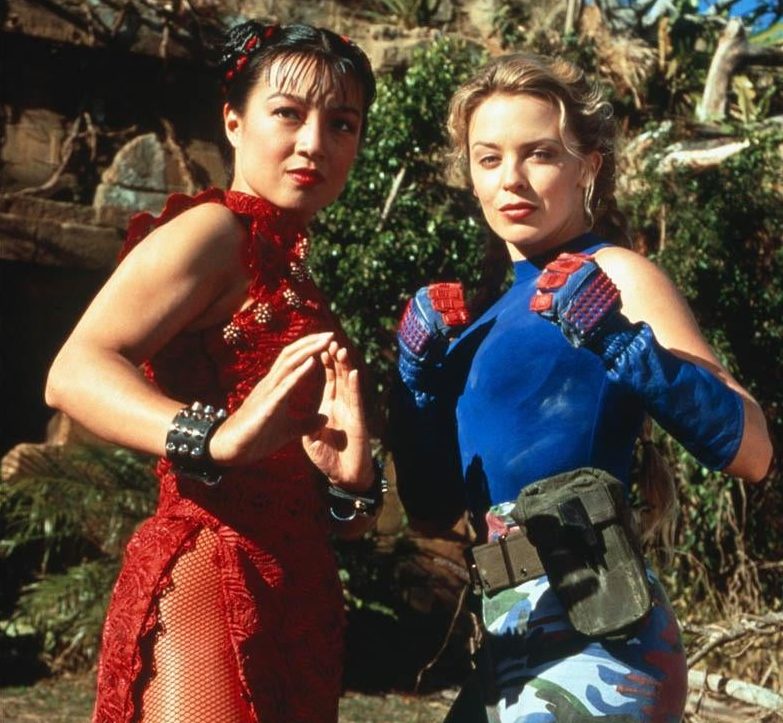
Other video game adaptations that came later, such as 1995’s Mortal Kombat and 2006’s DOA: Dead or Alive, would follow that basic fight tournament format.
[rtk_adunit_middle]
However, from the beginning Steven de Souza wasn’t interested in treating Street Fighter this way.

Instead, the writer-director wanted to place the video game characters in a big, James Bond-style adventure.
[rtk_adunit_bottom]
On pitching this to Capcom, de Souza found they had similar ideas, so with all in agreement that was the direction the film went in.
15. Jean-Claude Van Damme was paid a quarter of the film’s budget to star

As well as being a skilled martial artist, Jean-Claude Van Damme was one of the biggest action stars around when Street Fighter was set to go before cameras.
[rtk_adunit_top]
Capcom had always wanted the actor to play Guile, and were desperate to do everything they could to have him sign on the dotted line.

As such, Van Damme took home a cool $8 million to appear in Street Fighter – nearly a quarter of the movie’s modest $35 million budget.
[rtk_adunit_middle]
This is why the bulk of Street Fighter’s cast beyond Van Damme and Raul Julia were comparative unknowns.
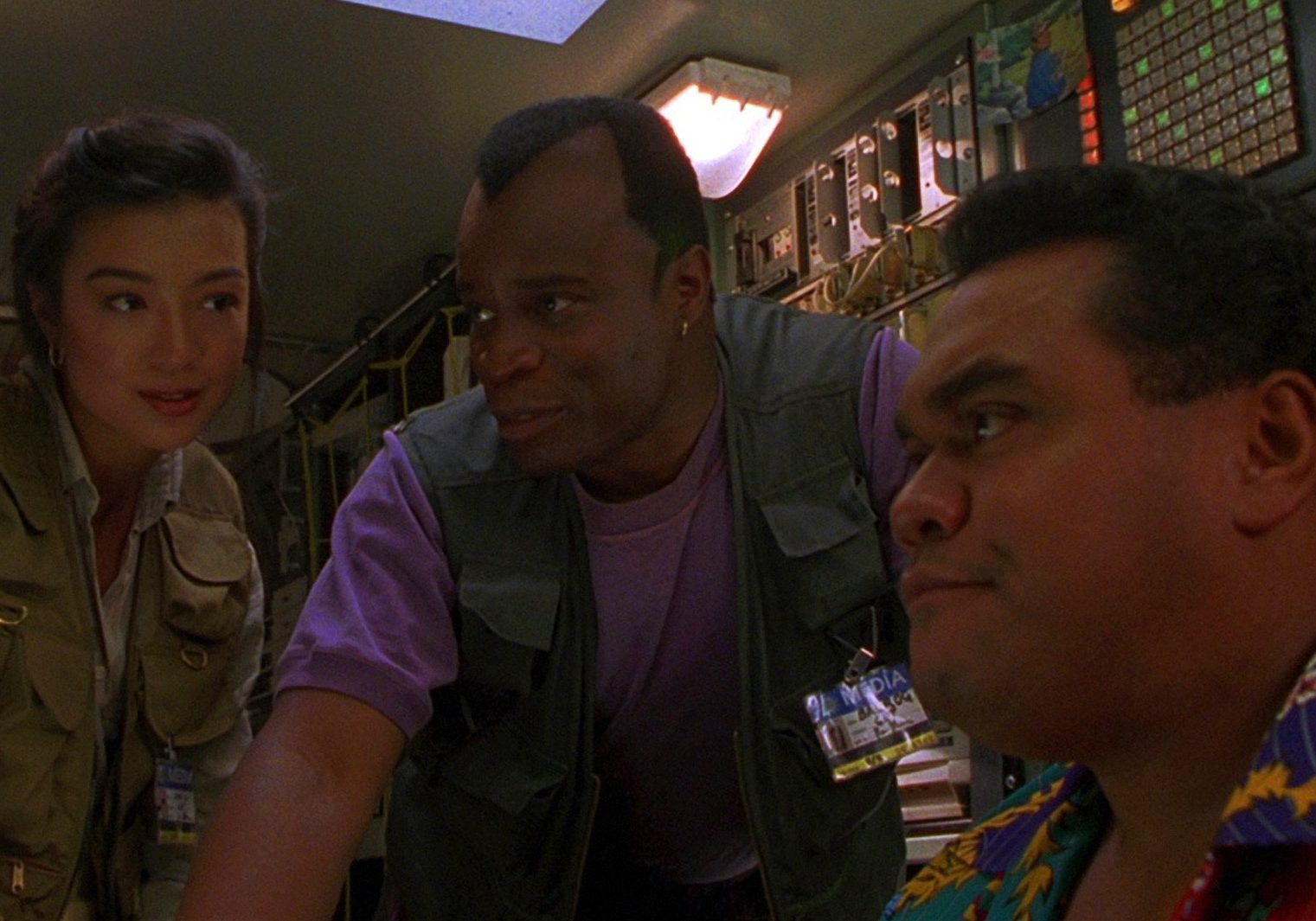
Simply put, the production just didn’t have enough money left to hire more big name stars.
[rtk_adunit_bottom]
Reportedly, Van Damme turned down a role in another video game movie, 1995’s Mortal Kombat, in favour of playing Guile.
14. Disagreements over the casting of Ryu led to the creation of an all-new character
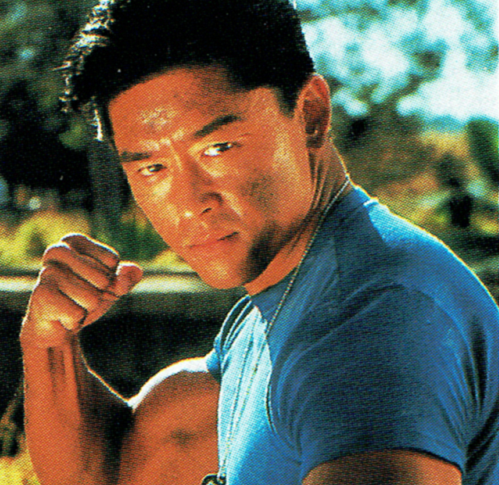
Steven de Souza found himself at loggerheads with Capcom over the casting of one key Street Fighter character: Ryu.
[rtk_adunit_top]
The video game company were pushing for Kenya Sawada, a Japanese actor who had already played a Ryu-esque role in some Japanese TV commercials.

Director de Souza, however, had already offered the role to Hong Kong-American newcomer Byron Mann.
[rtk_adunit_middle]
Mann recalls getting “real dagger looks” from Sawada during the casting process, as the Japanese actor very much wanted his role.
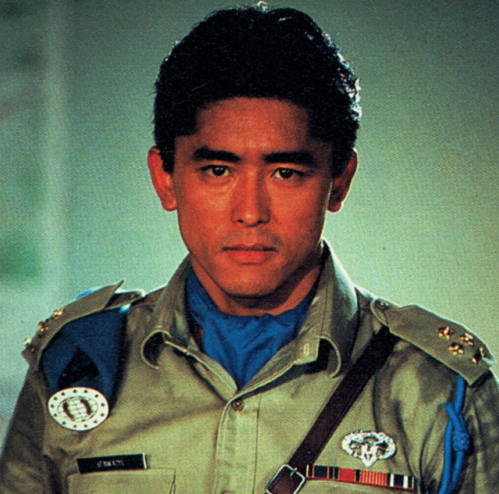
With no other casting slots to fill, de Souza reached a compromise by creating an all-new character not previously seen in the games, named (aptly enough) Captain Sawada.
[rtk_adunit_bottom]
As Sawada spoke very little English, his lines wound up being dubbed by another actor in the film’s Western release.
13. Kylie Minogue stars because the production had to cast someone Australian

As well as being limited to lesser-known actors for budgetary reasons, director Steven de Souza also found pressure mounting to appease the local actors’ unions where Street Fighter was filming.
[rtk_adunit_top]
As Street Fighter was being filmed partially in Australia, the Australian Actors Guild very much wanted local names to land prominent roles.

At the same time, de Souza and his team were having no luck finding anyone to play the last remaining significant role in the cast: British soldier Cammy.
[rtk_adunit_middle]
De Souza was flipping through a magazine on an aeroplane when he stumbled upon an article about actress and singer Kylie Minogue.
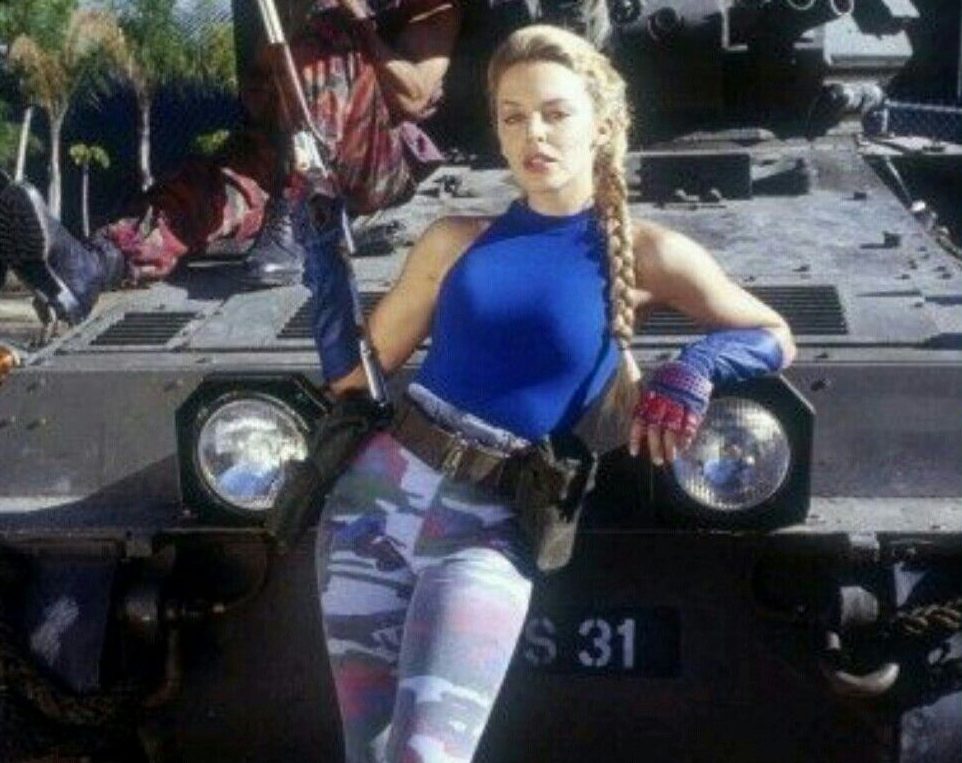
The director set up a meeting not long after getting off the plane, and Minogue was pretty much hired on the spot.
[rtk_adunit_bottom]
Although Minogue had long been a huge star in Australia and Britain, she was considerably more obscure in the US at the time.
12. Raul Julia signed on to the movie knowing he didn’t have long left to live
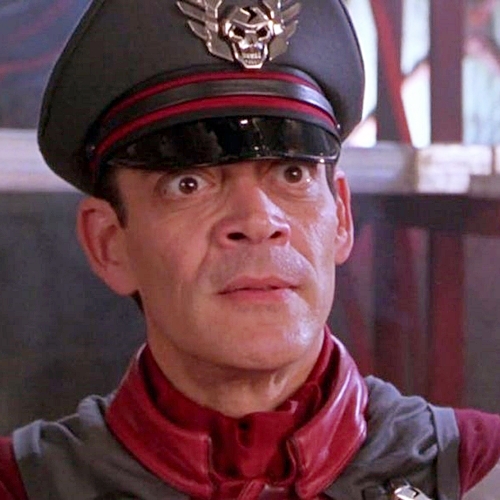
Just about the one thing in Street Fighter that received universal praise was the performance of Raul Julia as M Bison.
[rtk_adunit_top]
Sadly, it was the esteemed actor’s swansong, as he died of a stroke two months before the film made it to screens.
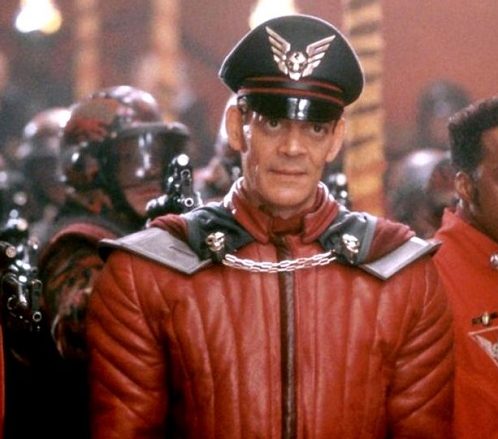
The actor had been in poor health for some time, having undergone surgery for stomach cancer mere months before Street Fighter went before cameras.
[rtk_adunit_middle]
Julia agreed to make the film regardless, primarily as a last gift for his children, who loved the video game.
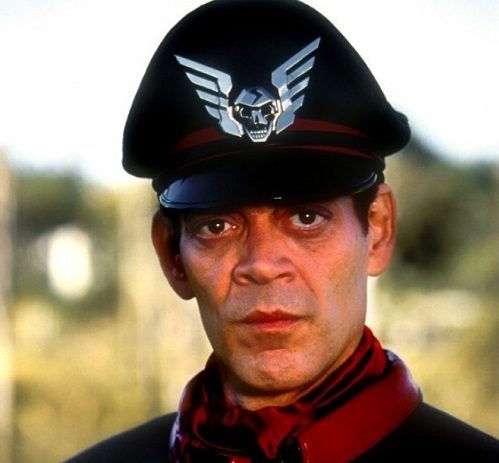
The shoot was specifically re-arranged to accommodate Julia’s recovery, and the cast and crew recall the actor being a consummate professional from start to finish despite his obvious frailty.
[rtk_adunit_bottom]
Street Fighter is dedicated to Julia’s memory. The Addams Family star also received a posthumous Saturn Awards nomination for Best Supporting Actor for the film.
11. The actors had to learn their fight choreography on the day of shooting
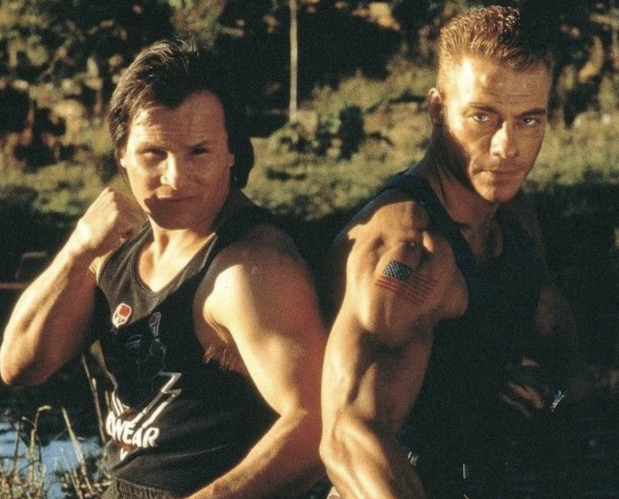
Martial arts legend Benny ‘The Jet’ Urquidez (above, with Van Damme) was hired to choreograph Street Fighter’s fight sequences.
[rtk_adunit_top]
The initial plan had been for Urquidez to spend six weeks training the cast before cameras started rolling.
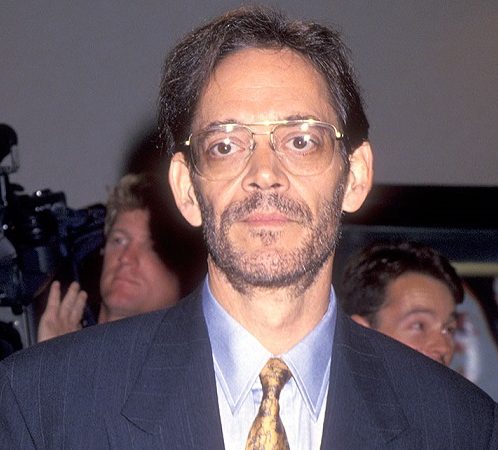
However, when Raul Julia (who had, up to that point, kept his illness secret) turned up to set looking skeletal, a major rethink was required.
[rtk_adunit_middle]
The actor needed time to put weight back on, so his scenes were rearranged until late in the shoot – meaning the supporting cast were required to shoot their scenes first.

As such, there simply wasn’t time to rehearse the fights as thoroughly as they’d originally intended, meaning the actors often had to learn their moves immediately before shooting.
[rtk_adunit_bottom]
For instance, in the scene when Ryu brandishes a sword, actor Byron Mann had been shown the moves mere moments earlier – and he was using a genuinely sharp sword, with which he could easily have hurt himself or others.
10. The Thailand shoot was a nightmare
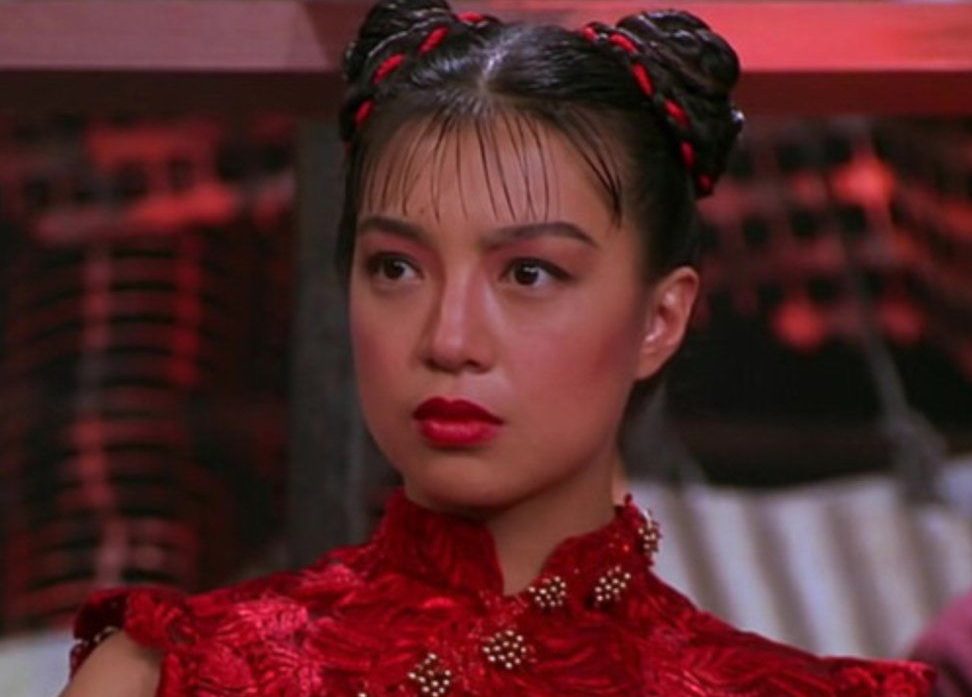
A large portion of Street Fighter was shot on location in Thailand, which presented a whole set of challenges for the cast and crew,
[rtk_adunit_top]
For one, it was rainy season, and the noise from the heavy downpour meant it was often impossible to record any live sound on set.
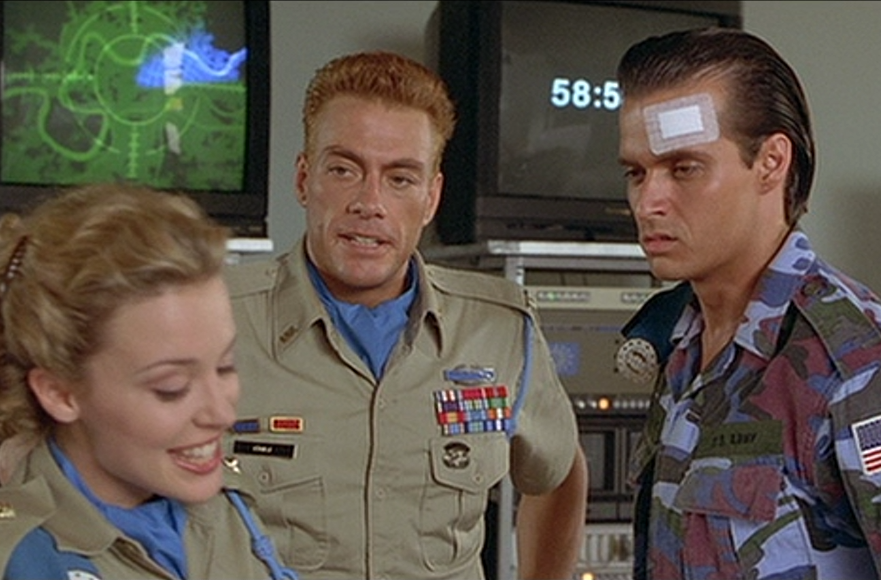
Power outages on set were also commonplace, perhaps as a result of the weather, or the poor condition of the Thai sound stage.
[rtk_adunit_middle]
As if this wasn’t enough, there were fears of a coup in Thailand at the time of shooting, with the Thai military at one point shutting down the nation’s roads.
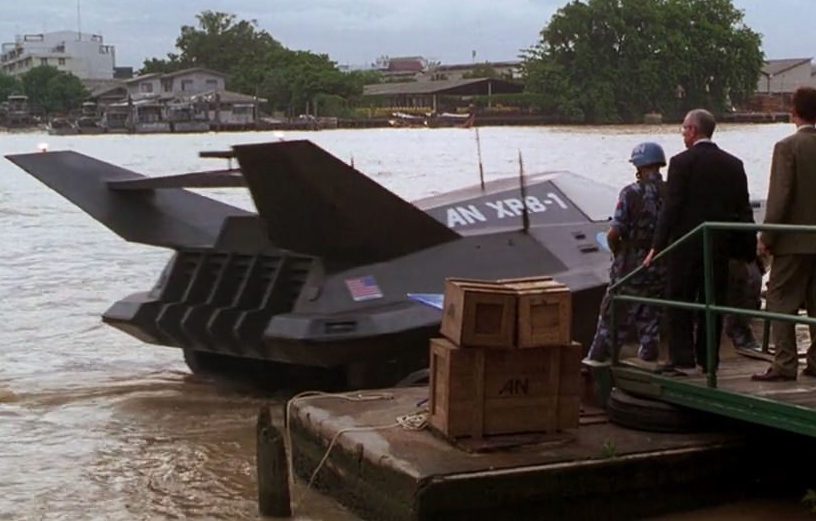
This meant the cast and crew had to travel to and from the sets down the canals by speedboat.
[rtk_adunit_bottom]
As such, they would all frequently be soaked to the skin before they even reached the set.
9. Jean-Claude Van Damme’s drug use caused havoc on set

Jean-Claude Van Damme was at the height of his action hero fame when he landed the lead role in Street Fighter.
[rtk_adunit_top]
He was also very much living the Hollywood bad boy lifestyle on the Street Fighter set, to the chagrin of his co-workers.
Van Damme was said to have been spending $10,000 a week on illicit substances at the time, and director de Souza has admitted the actor was “coked out of his mind” throughout production.
The actor would routinely show up for work late, or sometimes not at all, preferring to stay in his hotel suite or jetting off to party in Hong Kong for days at a time.
[rtk_adunit_middle]
Perhaps unsurprisingly, Van Damme was very often intoxicated when he showed up for work as well.
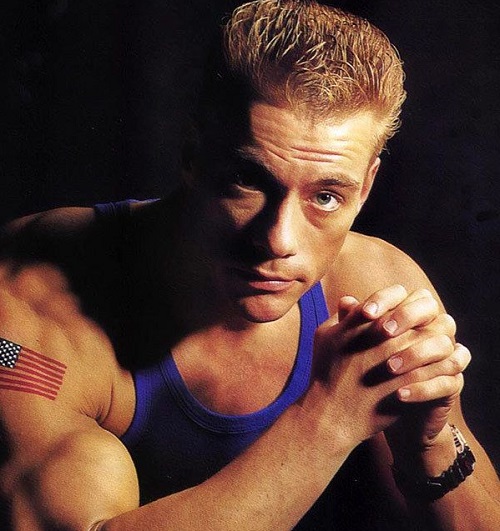
On one occasion, the actor reportedly clashed with a crew member who chastised him for bringing a bottle of champagne to set.
[rtk_adunit_bottom]
De Souza recounts, “every day I’d ask if Julia had taken his meds – and if Van Damme was off them.”
8. Jean-Claude Van Damme and Kylie Minogue had an affair on set

Years later, Van Damme also admitted to having an on-set affair with his Street Fighter co-star Kylie Minogue.
[rtk_adunit_top]
The actor said in 2012, “It happened. I was in Thailand, we had an affair. Sweet kiss, beautiful lovemaking.”

Van Damme remarked, “it would be abnormal not to have had an affair, she’s so beautiful.”
[rtk_adunit_middle]
This despite the fact that Van Damme was married to his fourth wife Darcy LaPier, who was also pregnant at the time.
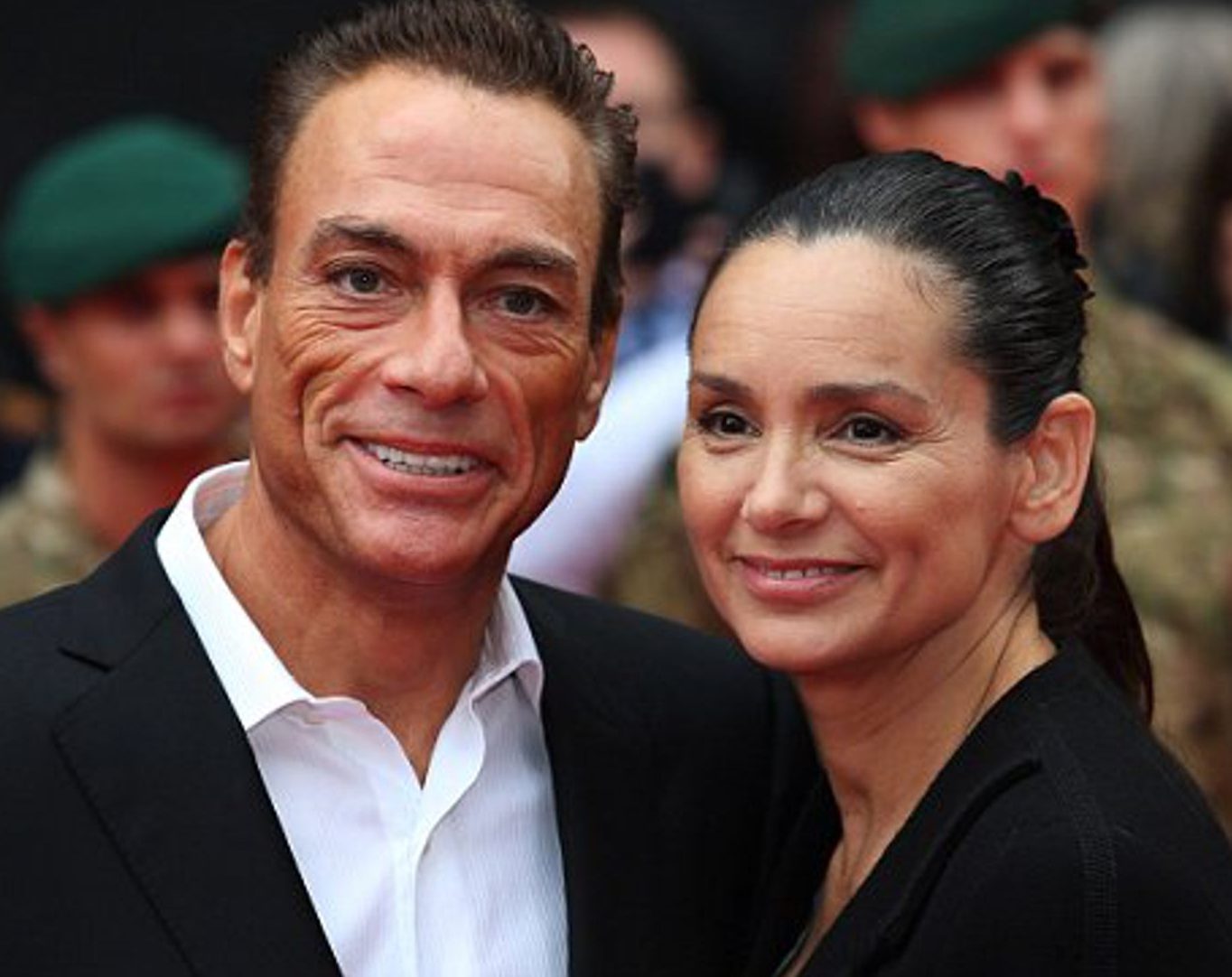
- Credit: Getty Images
The actor never told his then-wife of his indiscretion, and she only learned about it after he spoke about it in the press.
[rtk_adunit_bottom]
Van Damme and LaPier divorced in 1997, and he later re-married third wife Gladys Portugues (above) with whom he remains to this day.
7. Chun-Li actress Ming-Na Wen reduced one of her male co-stars to tears with a single punch
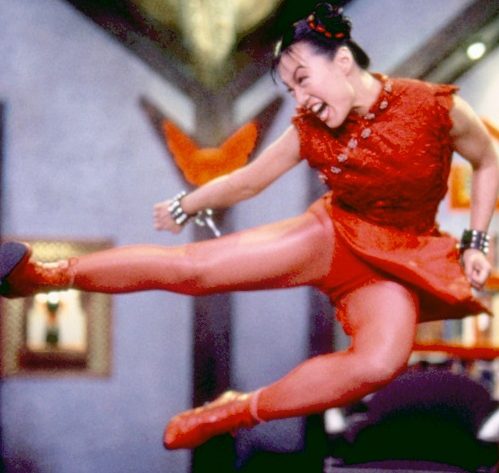
With leading man Van Damme off in his own superstar bubble, Street Fighter’s lesser-known supporting actors bonded in their own way.
[rtk_adunit_top]
As might be expected, it was a testosterone-charged environment; Byron Mann for one admits there was a lot of competition between the male stars as to who could get in the best musclebound shape.

However, Chun-Li actress Ming-Na Wen was also working out hard for her role, and it seems she got genuinely fighting fit.
[rtk_adunit_middle]
Wen jokes of her male co-stars: “They were all big wussies… I won’t name names, but I got into one of those brother-sister banter relationships with one of the other actors.”
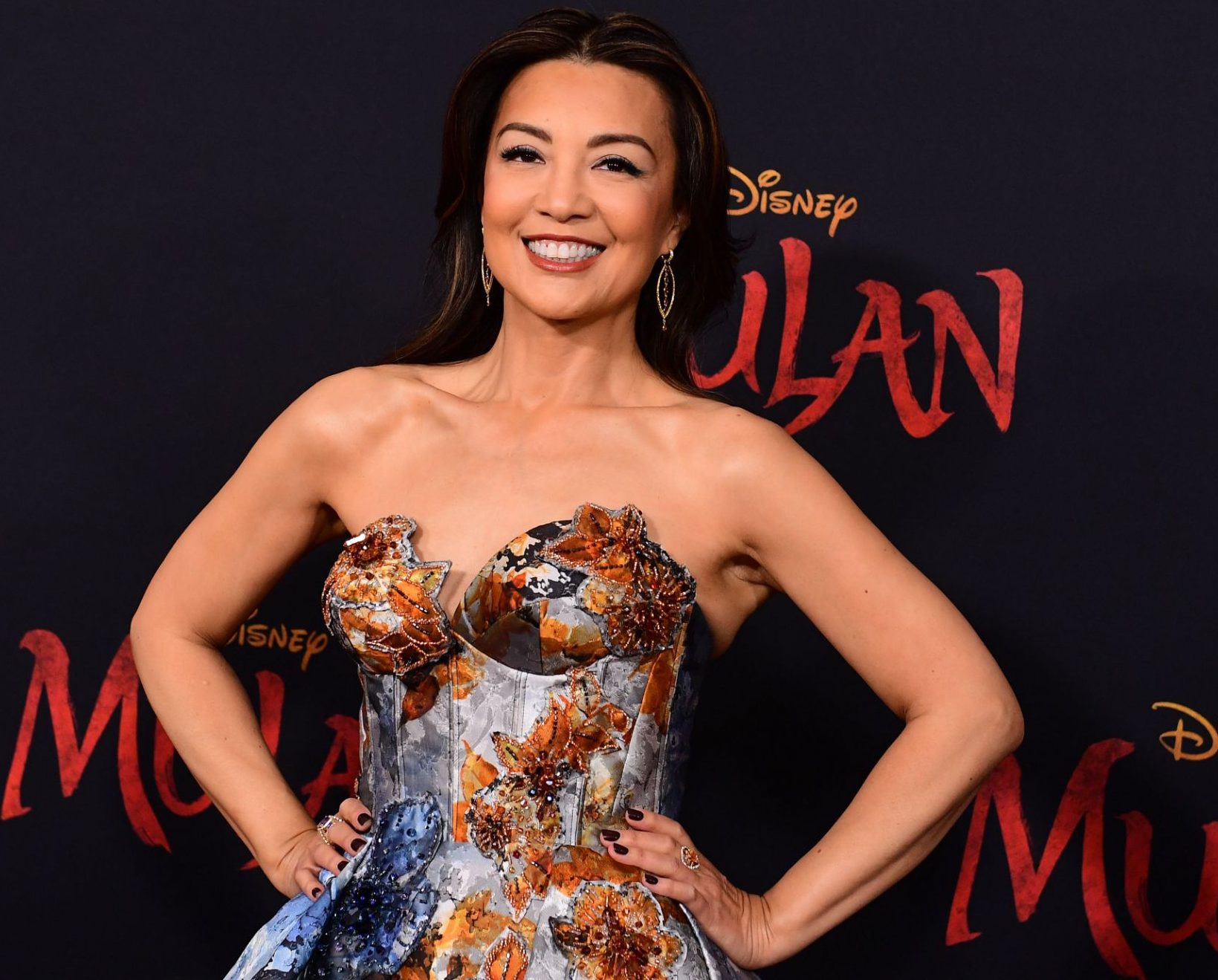
- Credit: Frederic J. Brown/AFP via Getty Images
“I remember one day, I punched him so hard he cried. We were just goofing around!”
[rtk_adunit_bottom]
Ming-Na Wen rose to fame in the 90s on TV’s E.R. and as the voice of the title character in Disney’s Mulan.
6. Hasbro used the movie to help sell its GI Joe toy line
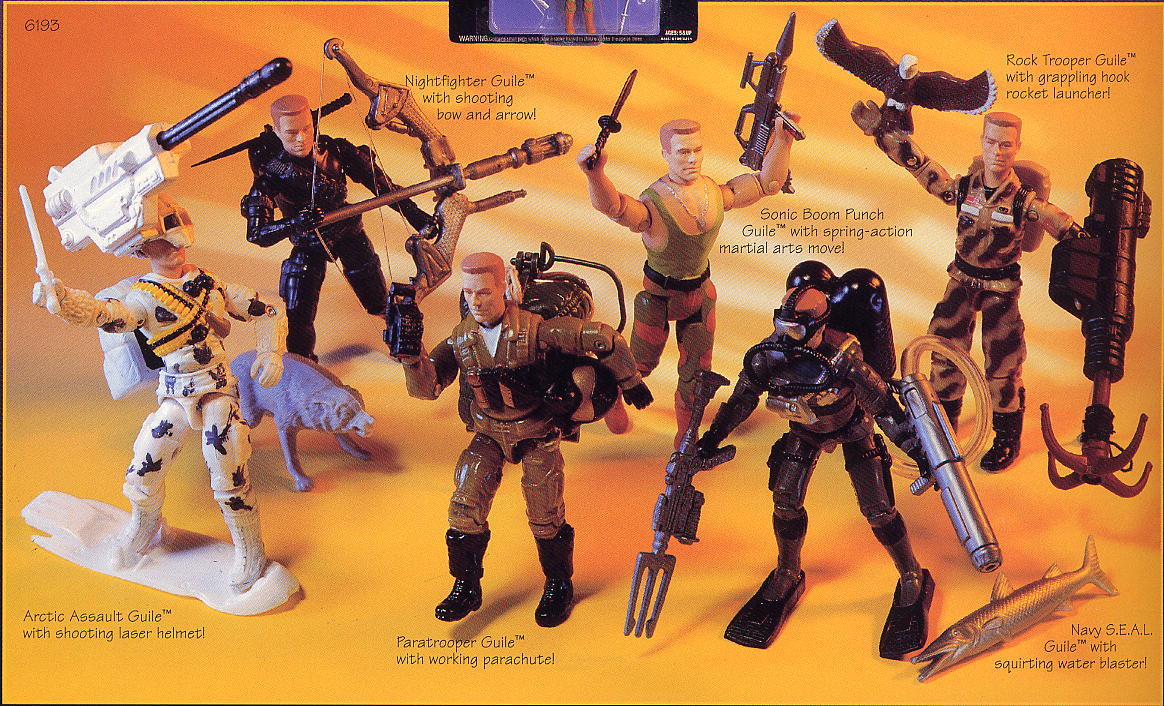
- Credit: Hasbro
One element of the Street Fighter movie notable by its absence in the original games is the emphasis on soldiers, vehicles and firepower.
[rtk_adunit_top]
Of course, the inclusion of these elements makes sense given de Souza and Capcom’s Bond-esque vision – but there was more to it than that.
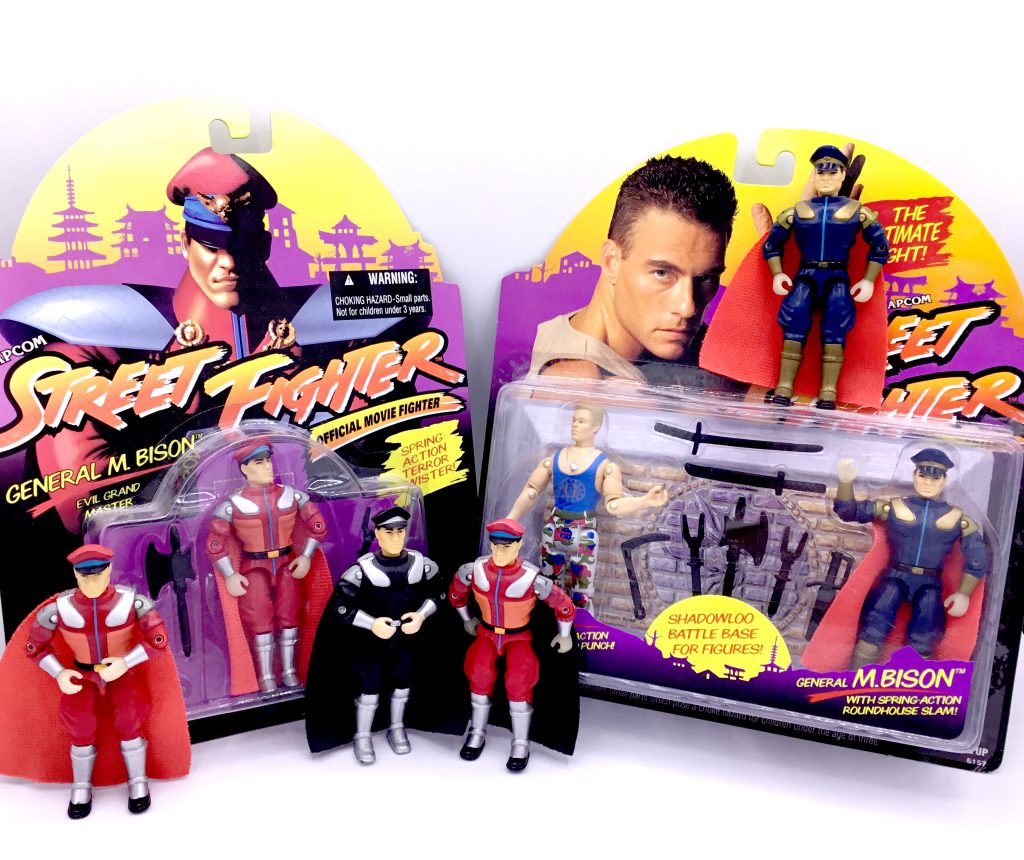
- Credit: Hasbro/Bisonopolis.com
Capcom had actually partnered with famed toy company Hasbro to create a Street Fighter toy line.
[rtk_adunit_middle]
Hasbro themselves saw this partnership as an opportunity to rejuvenate their ailing property GI Joe.
GI Joe was one of Hasbro’s most enduring properties, which sold well in the 80s thanks to the tie-in cartoon and comics – but the toys were no longer selling very well by 1994.
As such, Hasbro intended to sneakily relaunch the same figures and vehicles (with minimal tweaks) as Street Fighter movie tie-ins.
[rtk_adunit_bottom]
This explains the prominence of soldiers in the movie, and fancy vehicles such as Guile’s attack speedboat.
5. An expletive was added in post-production to make the film less family-friendly
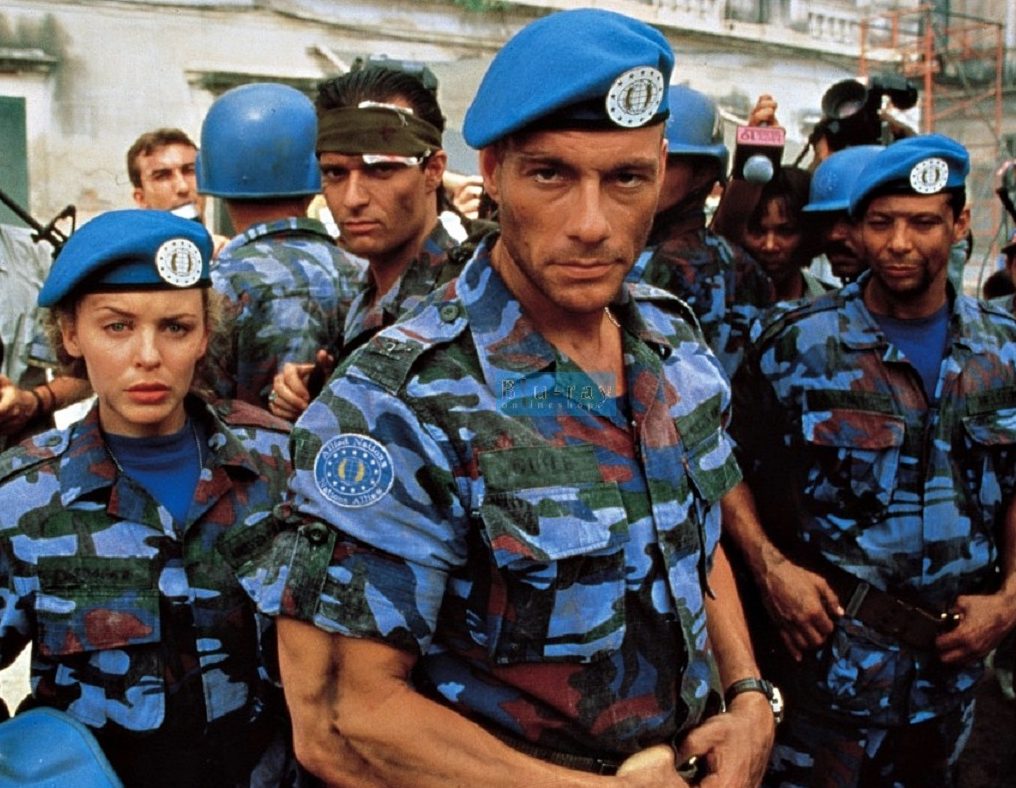
With a CV that includes the Die Hard and 48 Hrs movies, writer-director Steven de Souza doesn’t tend to make films that are particularly family friendly.
[rtk_adunit_top]
Even so, the director was surprised when the initial cut of Street Fighter that was submitted to ratings board the MPAA was slapped with an R rating.
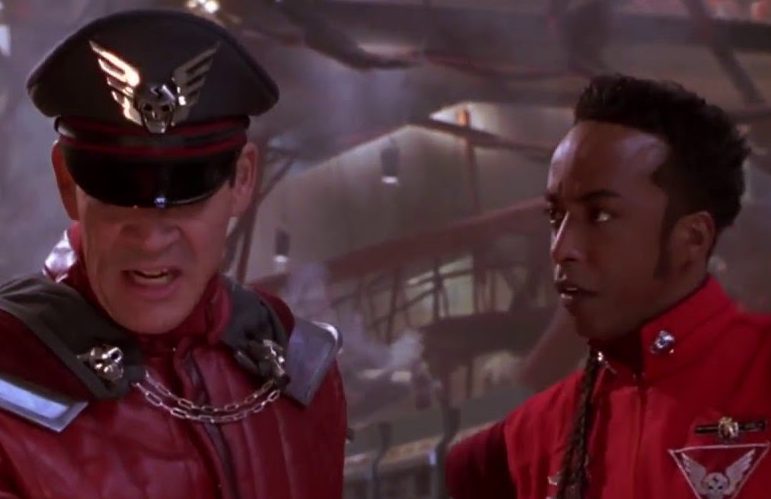
Neither de Souza nor Capcom were happy with this, knowing that the film needed to be accessible to the children who made up a large percentage of the video game’s players.
[rtk_adunit_middle]
Cuts were made accordingly – however, this re-edited version of Street Fighter then landed an ultra-family-friendly G rating.
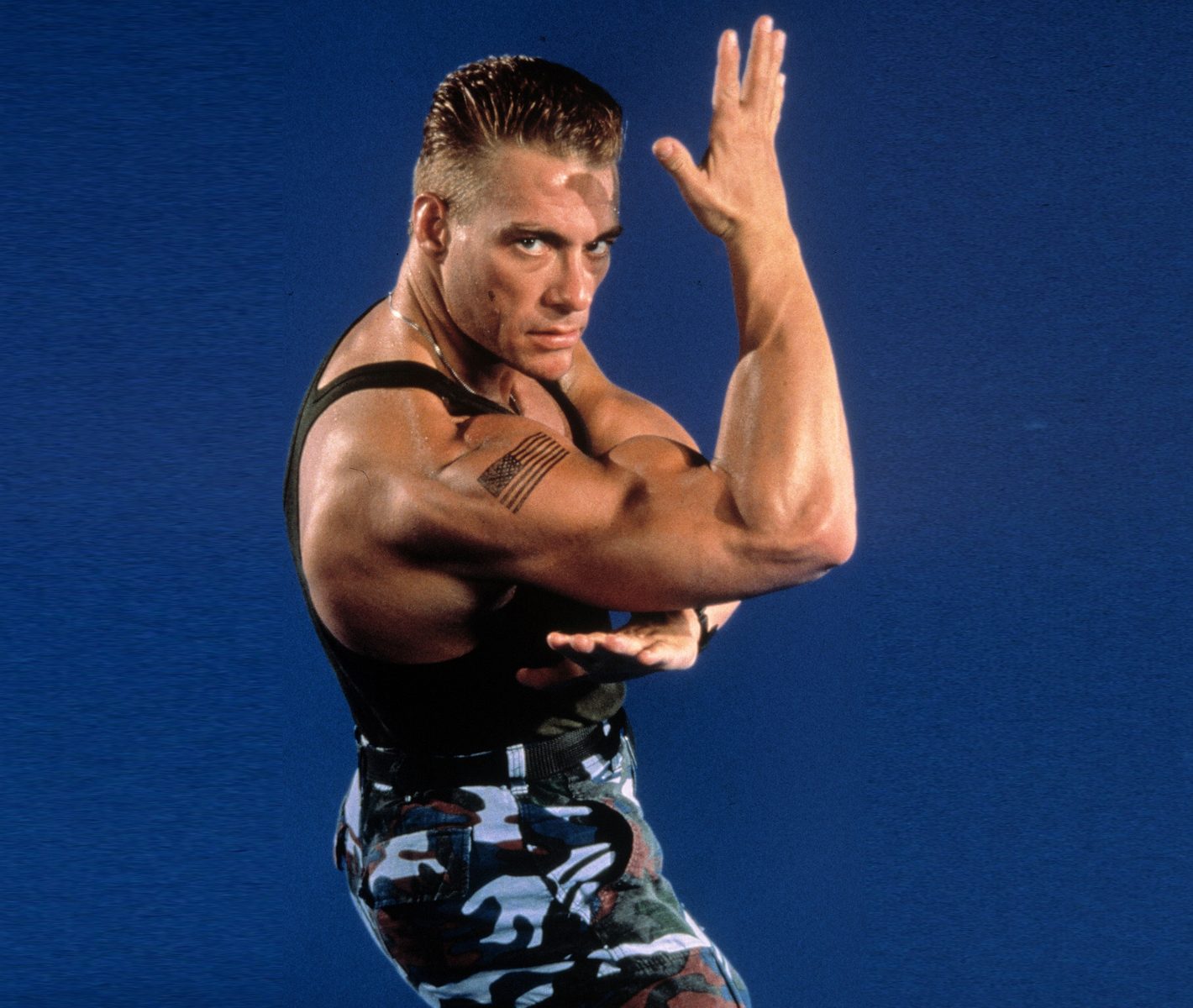
Neither the director nor the studio were happy with this either, worried that the G rating might have left audiences expecting the film to be just for kids.
[rtk_adunit_bottom]
To remedy this, a rude word was added in post-production (Van Damme saying “s**t,” to be precise) in order to bump the film back up to the commercially preferable PG-13 rating.
4. A post-credits scene had to be cut from the movie after Julia died
https://www.youtube.com/watch?v=0V9FginJFFM
In the past two decades, Marvel Studios have popularised the post-credits scene intended to set up a sequel.
However, such scenes had already popped up now and then in years gone by.
[rtk_adunit_top]
Originally, Street Fighter was poised to have just such a scene attached at the end of the credits.
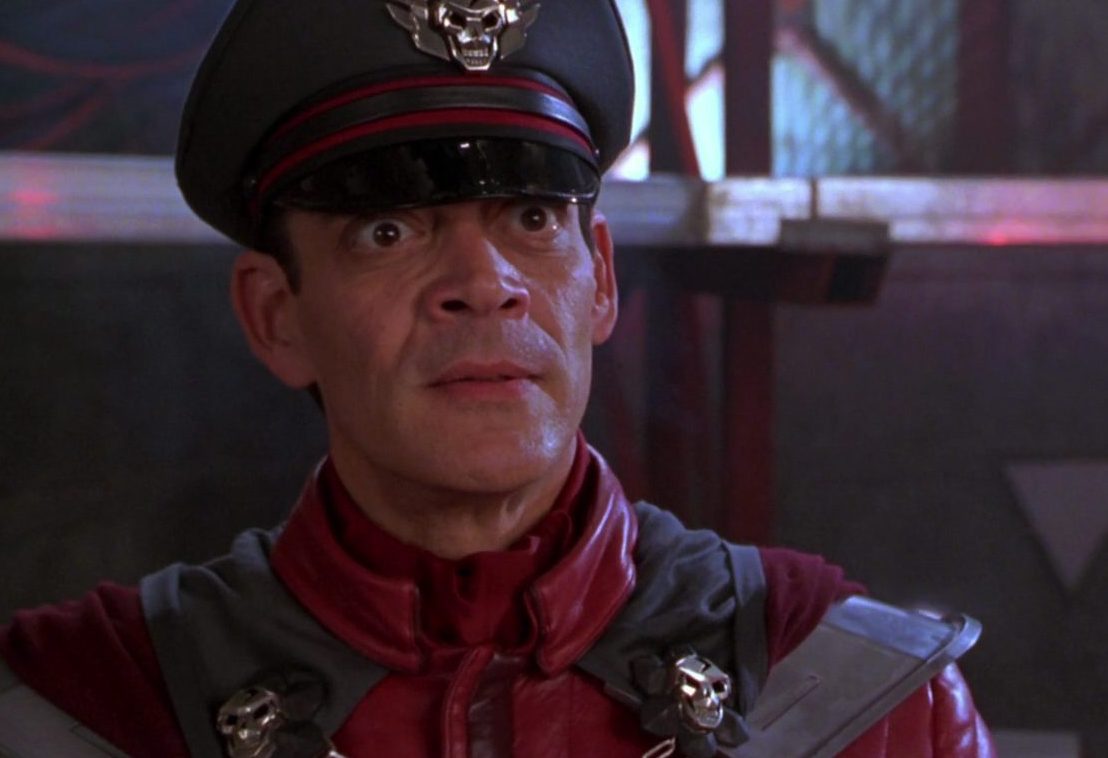
This brief scene saw the fist of the supposedly dead Bison smash up through some rubble.
[rtk_adunit_middle]
After this, a computer screen displayed the message ‘World Domination: Replay,’ leaving the door open for the villain to return in a follow-up film.

However, out of respect for the recently deceased Julia, this scene was cut from the theatrical cut of the film.
[rtk_adunit_bottom]
However, the scene has since been restored to the film on home entertainment formats.
3. There were two video game adaptations of the movie

Tie-in video games based on movies are nothing new, but you might not have thought there’d be much demand when the movie in question was itself based on a video game.
[rtk_adunit_top]
However, as strange as it may seem, video game adaptation Street Fighter also got two video game adaptations of its own.

1995 saw the release of coin-op arcade game Street Fighter: The Movie, developed by American company Incredible Technologies and distributed by Capcom.
[rtk_adunit_middle]
The basic gameplay is similar to existing Street Fighter games, but with new combo moves, and avatars modelled on the actors from the movie.
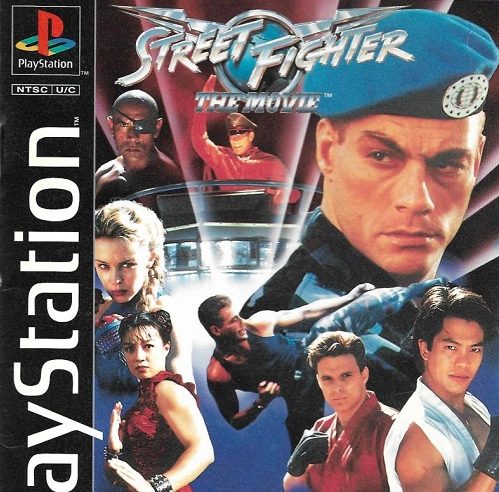
Later that same year, another video game entitled Street Fighter: The Movie was released for the Playstation and Sega Saturn consoles.
[rtk_adunit_bottom]
This was not an adaptation of the coin-op but an all new game with different options, including a single player story mode which followed the plot of the movie.
2. The film was hated by critics, but made plenty of money

1993’s Super Mario Bros had already seen to it that video game movies hadn’t gotten off to a great start with the critics.
[rtk_adunit_top]
Street Fighter followed suit, getting an absolute mauling in the reviews which met its release in December 1994.

Stephen Holden of The New York Times declared the film “a dreary, overstuffed hodgepodge of poorly edited martial arts sequences and often unintelligible dialogue.”
[rtk_adunit_middle]
All these years later, Street Fighter carries a shockingly low 11 percent rating on reviews aggregator Rotten Tomatoes.
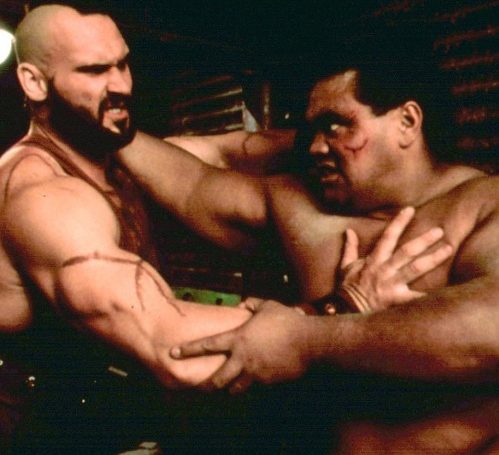
Despite this, writer-director Steven DeSouza and several members of the cast admit to being proud of the film – and even if critics didn’t like it, audiences did.
[rtk_adunit_bottom]
As it made just shy of $100 million worldwide in box office receipts off a $35 million budget, Street Fighter proved a very respectable hit – and wound up doing even better business on VHS.
1. It spawned a reboot and a TV series

1994’s Street Fighter movie was very much a one-and-done deal (plans for a sequel with Van Damme in the early 2000s never got off the ground), but it wasn’t the last screen adaptation of the video game.
[rtk_adunit_top]
In 2009, a big screen reboot arrived entitled Street Fighter: The Legend of Chun-Li, primarily intended as a tie-in with the recently launched video game Street Fighter IV.

Directed by Andrzej Bartkowiak (Romeo Must Die) with a cast including Kristen Kreuk and Michael Clarke Duncan, it was eviscerated by the critics, and largely sank without a trace after going straight to DVD in most countries.
[rtk_adunit_middle]
A third live action take on Street Fighter followed in 2014, with UK production Street Fighter: Assassin’s Fist.

Initially a short form web-series, Assassin’s Fist has also been edited into longer TV series format and a movie, and was met with a more positive response than previous adaptations.
[rtk_adunit_end]

